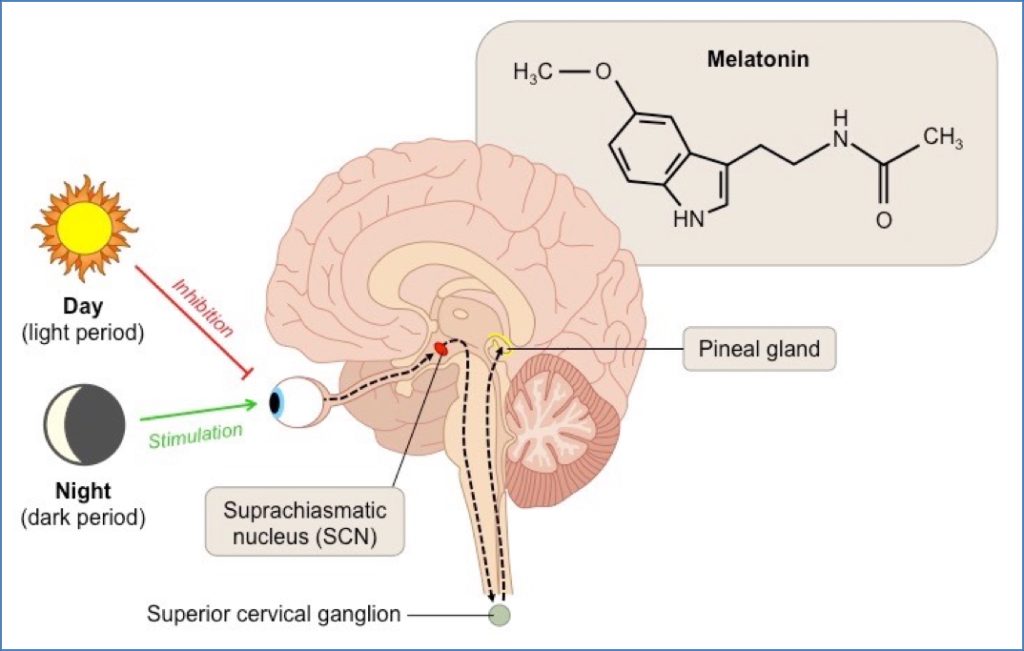Table of Contents
Overview – Pineal Gland
The pineal gland is a small endocrine structure located deep within the brain that plays a crucial role in regulating the body’s circadian rhythms via the secretion of melatonin. Understanding the pineal gland’s function helps explain sleep-wake regulation and its relation to environmental light cycles, which is highly relevant in both clinical and physiological contexts.
Location
- The pineal gland is situated in the epithalamus, positioned:
- Posterior to the hypothalamus and pituitary gland.
- Deep within the centre of the brain.
Function
- Synthesises and secretes melatonin, primarily during darkness.
- Regulates the body’s circadian rhythm, governing sleep-wake cycles.
- Activity is influenced by the detection of decreasing light levels via visual pathways.
Melatonin
- Derived from serotonin through enzymatic conversion:
- Serotonin → (via AANAT) → N-acetyl-serotonin
- N-acetyl-serotonin → (via ASMT) → Melatonin
- Melatonin secretion rises at night, promoting sleep onset and maintenance.
- Also involved in modulating seasonal biological rhythms in some species.


Summary
The pineal gland, located in the epithalamus, plays a key role in circadian rhythm regulation by producing melatonin in response to low light levels. This process is fundamental to the body’s sleep-wake cycle regulation. For a broader context, see our Endocrine Overview page.